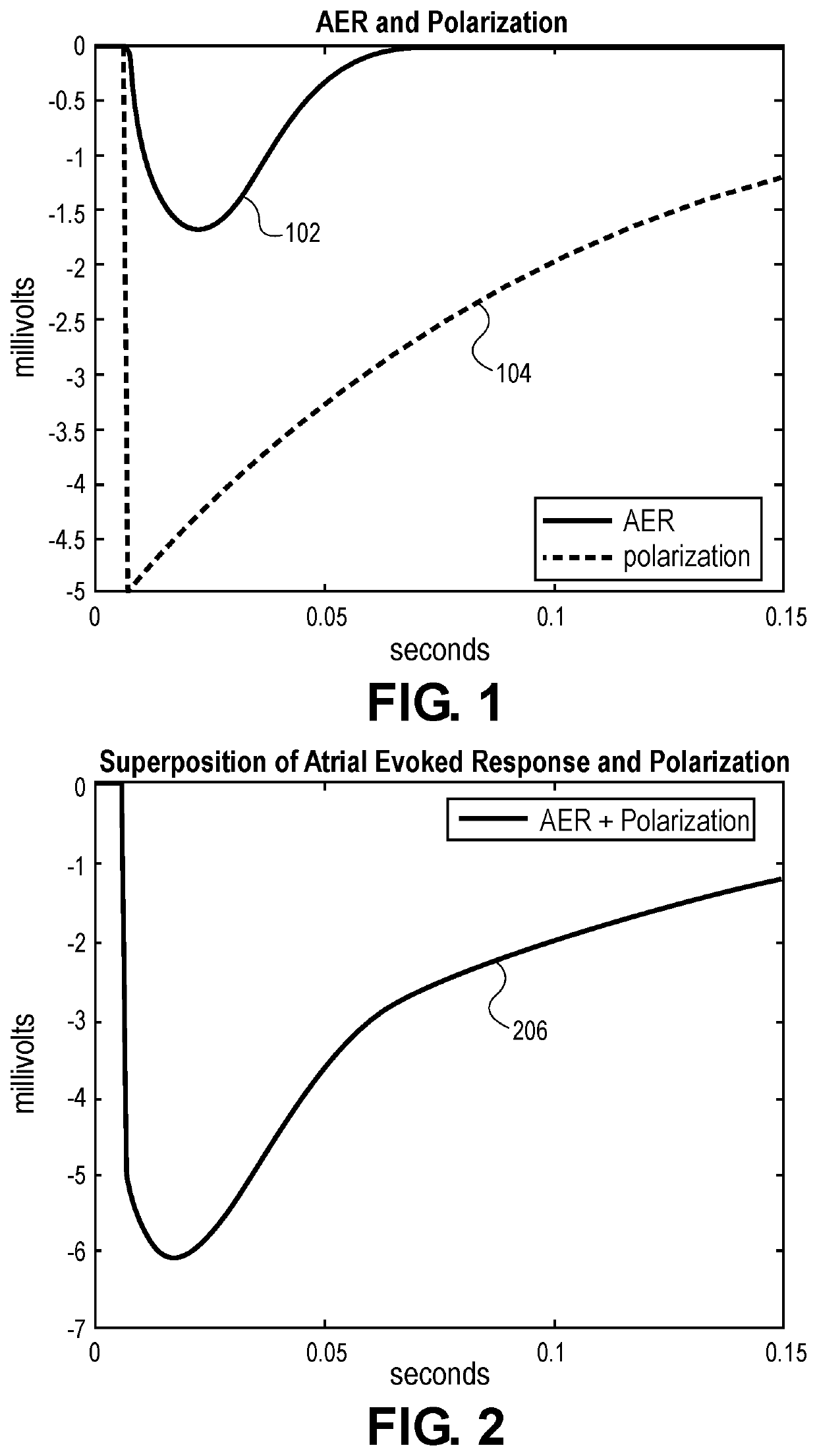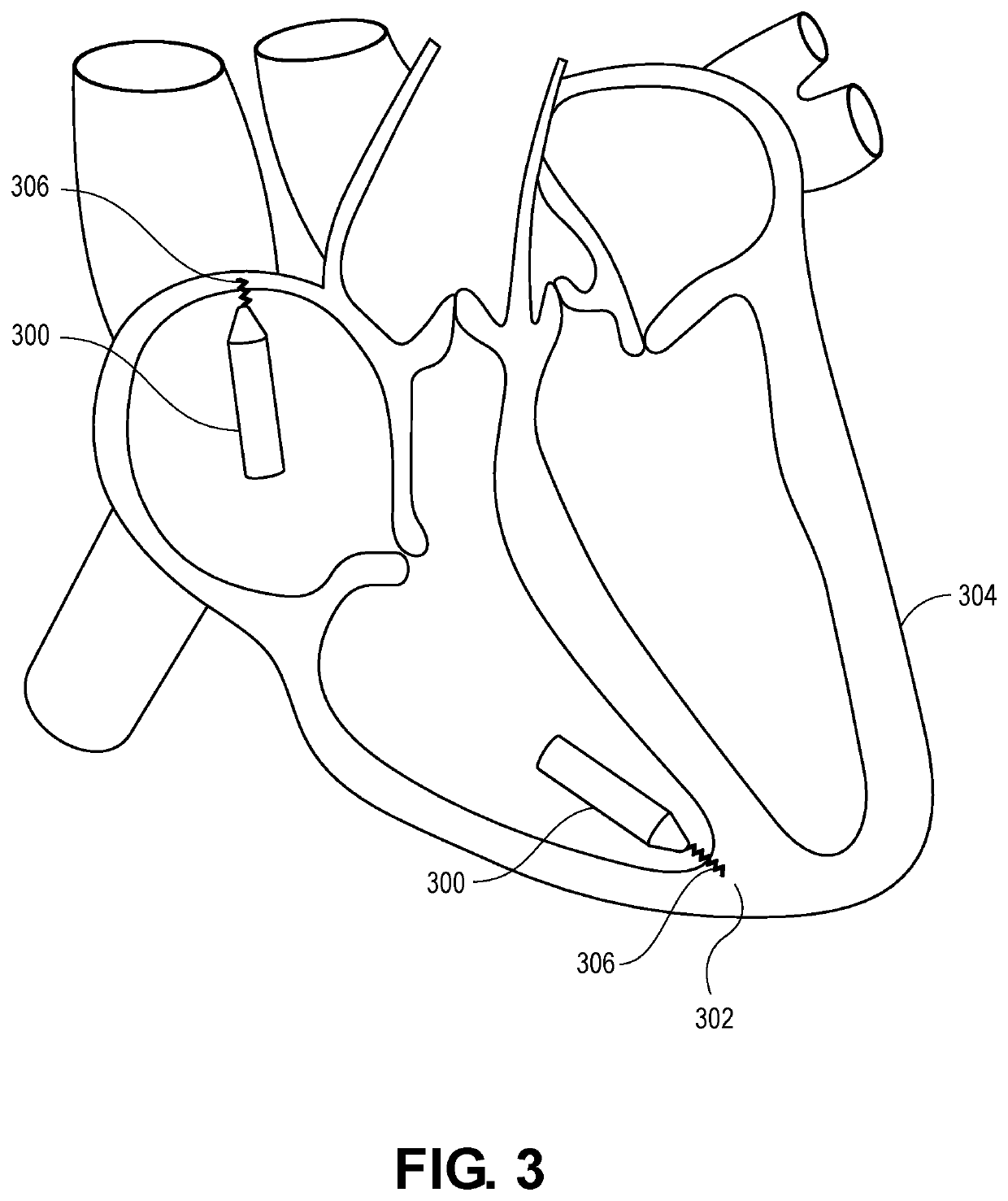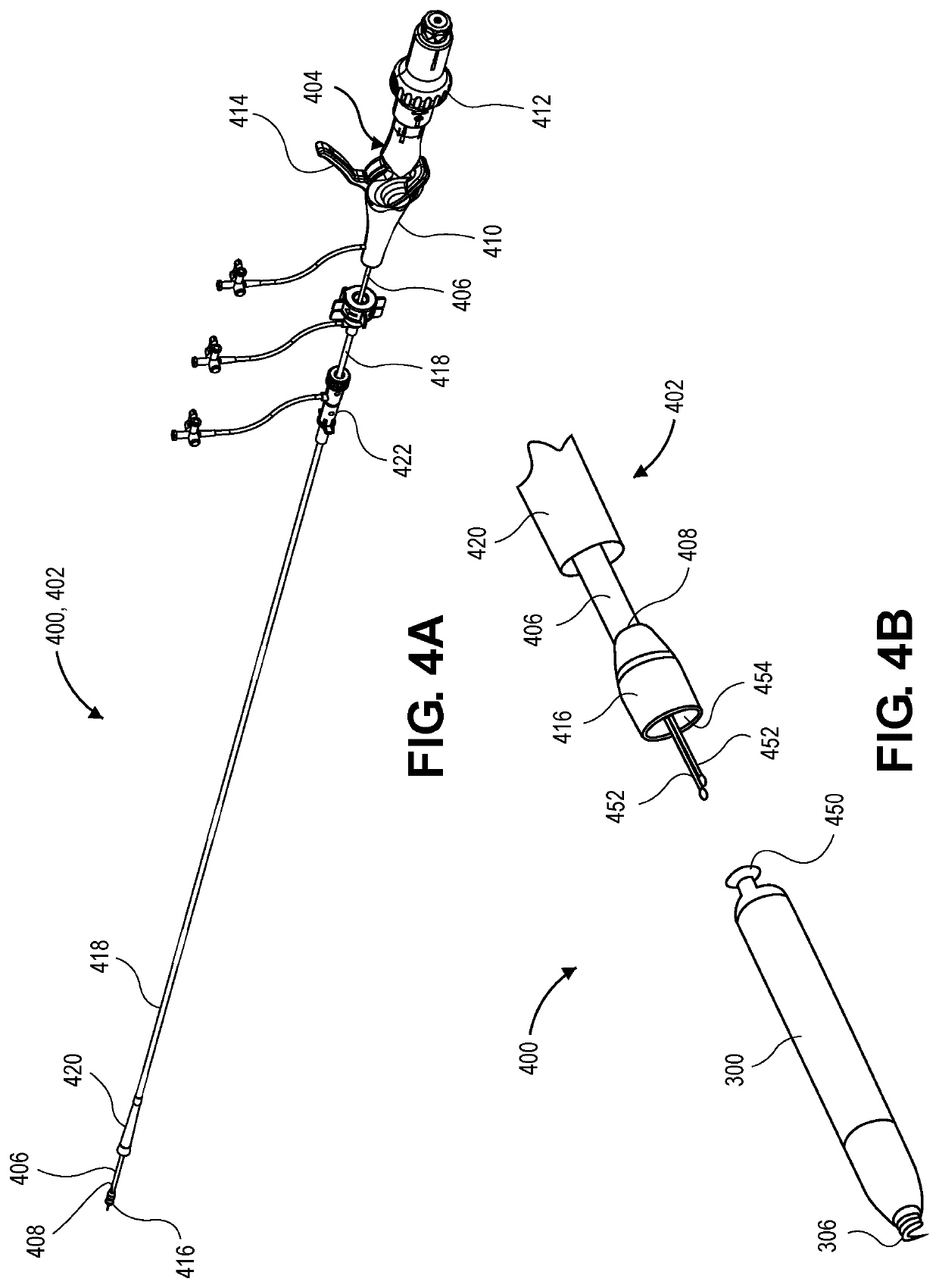Biostimulator having low-polarization electrode(s)
a biostimulator and electrode technology, applied in the field of leadless biostimulators, can solve the problems of complicated lead connectors, mechanical failure risks, and conventional pacemakers, and achieve the effects of minimizing power consumption, effective pacing, and maximizing pacer longevity
- Summary
- Abstract
- Description
- Claims
- Application Information
AI Technical Summary
Benefits of technology
Problems solved by technology
Method used
Image
Examples
Embodiment Construction
[0029]Embodiments describe a biostimulator having electrode(s) coated with low-polarization coating(s). The biostimulator may be a leadless biostimulator, such as a leadless cardiac pacemaker used to pace cardiac tissue. The biostimulator may, however, be used in other applications, such as deep brain stimulation. Thus, reference to the biostimulator as being a cardiac pacemaker is not limiting. Furthermore, reference to the biostimulator as being used to detect an atrial evoked response is not to be limiting of the applications of the biostimulator because the biostimulator may be used to detect other tissue or chamber evoked responses, such as a ventricular evoked response. More particularly, the biostimulator may be implanted in an atrium, a ventricle, or another body tissue of a heart.
[0030]In various embodiments, description is made with reference to the figures. However, certain embodiments may be practiced without one or more of these specific details, or in combination with ...
PUM
 Login to View More
Login to View More Abstract
Description
Claims
Application Information
 Login to View More
Login to View More - R&D
- Intellectual Property
- Life Sciences
- Materials
- Tech Scout
- Unparalleled Data Quality
- Higher Quality Content
- 60% Fewer Hallucinations
Browse by: Latest US Patents, China's latest patents, Technical Efficacy Thesaurus, Application Domain, Technology Topic, Popular Technical Reports.
© 2025 PatSnap. All rights reserved.Legal|Privacy policy|Modern Slavery Act Transparency Statement|Sitemap|About US| Contact US: help@patsnap.com



